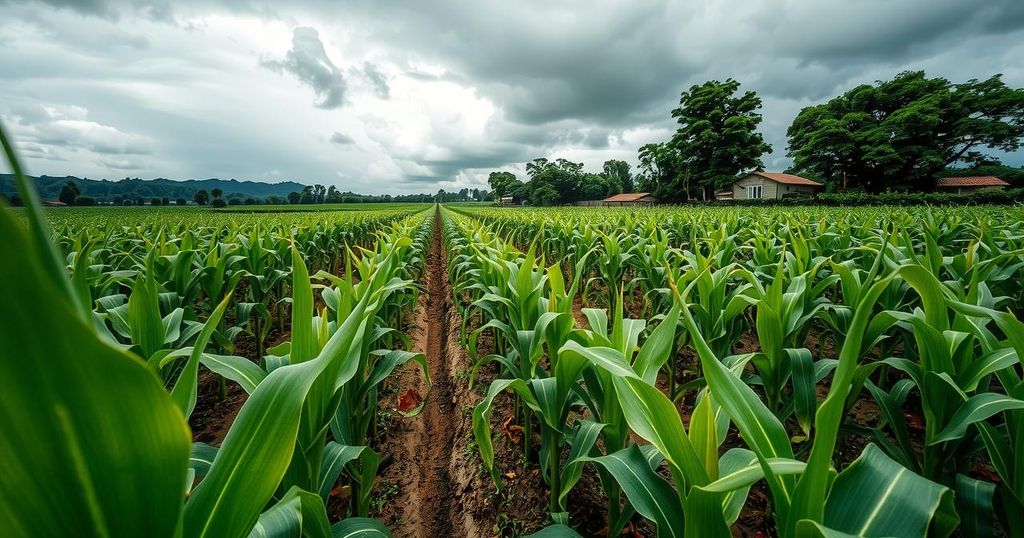Brazil’s Corn Harvest Faces Delays Due to Weather Challenges
- Brazil’s second corn crop harvest is slower than usual this year.
- Recent frosts did not significantly hurt crops, as critical growth has passed.
- Rain is causing delays in the harvest, affecting the overall pace significantly.
- Quality will be increasingly important due to variable regional weather impacts.
- Export flows will need to increase to stabilize domestic corn prices.
Current Status of Brazil’s Corn Harvest and Quality Concerns
The Brazilian second corn crop is facing a somewhat sluggish harvesting process this season due to persistent rainy weather that has hindered normal harvest conditions. As the autumn season transitions to the early winter months, it appears that the wet conditions have created a bottleneck for farmers trying to bring in their crops. While last week’s frosts were a concern, experts indicate that they had little impact since the plants had already passed their critical growth stages. However, there might be some damage to later crops due to a combination of frosts and continued rainfall. Quality, particularly in affected areas, will be crucial as these crops head to warehouses for storage and subsequent sales. The situation raises questions about the export dynamics, which, surprisingly, remained relatively steady in July; a trend that could lead to tighter liquidity in the domestic market.
Regional Harvest Conditions and their Implications for Corn Quality
In Brazil’s key agricultural states, the second crop is picking up pace, especially in regions like Mato Grosso and Matopiba, as harvests continue. This week in Goiás marks a notable advance, courtesy of beneficial rain received last week. Meanwhile, Southern states, including Minas Gerais and São Paulo, are just beginning their sorghum harvests while corn harvesting is expected to kick off around mid-July. Unfortunately, regions such as Paraná, Paraguay, and Mato Grosso do Sul have been battered by incessant rain through June, which is extending their harvest timelines. These weather conditions could push certain hybrid varieties into a potentially risky situation where moisture leads to increased burning rates, compromising crop quality. Notably, extensive frost occurrences across western regions could add to complications, although it seems most crops are still deemed ready for harvest.
Future Prospects for Brazilian Corn Exports and Domestic Prices
Looking ahead, the upcoming weeks are critical as approximately 100 million tons of corn are set to hit the market, along with an additional 10 to 12 million tons from Matopiba. While domestic demand remains strong, the sheer volume may overwhelm the market unless export levels pick up. The current export situation appears less than ideal; June figures show only 650 thousand tons shipped, with July’s forecast touching 1.6 million tons, a significant drop from the 3.6 million tons sent out in July 2024. This mismatch raises alarms about price pressures in the domestic market. Ports like São Luís, Santos, and Paranaguá are notably falling short in shipment capabilities, further complicating the situation as soybeans and sugar shipments continue to dominate, occupying the space that could potentially be filled by corn. For stakeholders in the corn market, especially in the face of falling CBOT prices and a strong dollar, the coming months will require careful navigation as they await more favorable export opportunities and consider potential shifts in domestic demand to balance supply effectively.
In summary, Brazil’s corn harvest is experiencing delays due to unfavorable weather conditions, but the overall quality of the second crop remains largely intact. Domestic demand is favorable; however, export levels will need to improve to manage the influx of supply expected in the upcoming weeks. With evolving market dynamics and necessary adaptations poised to unfold, stakeholders must watch for shifts in pricing and export capabilities in the months ahead.




Post Comment